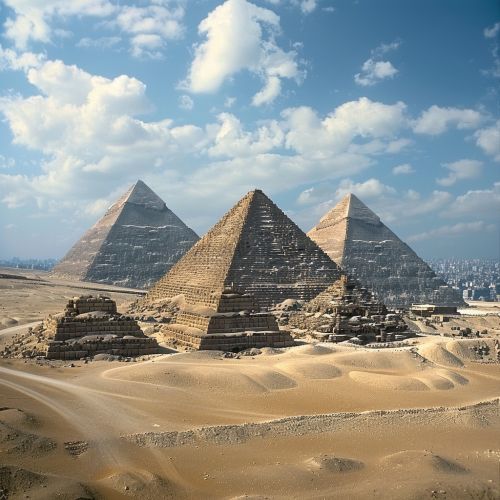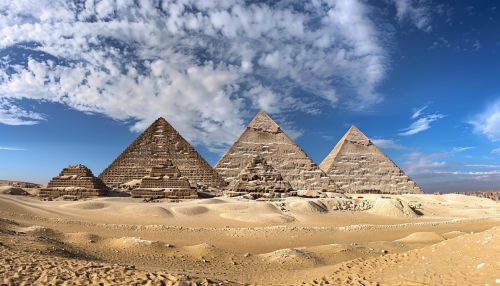Pyramids of Giza
Introduction
The Pyramids of Giza are a collection of ancient structures located on the outskirts of Cairo, Egypt. They are one of the Seven Wonders of the Ancient World and remain largely intact. The complex includes three main pyramids, several smaller pyramids, and the Great Sphinx. The pyramids were built during the Fourth Dynasty of the Old Kingdom of Ancient Egypt, a period known for its advancements in architecture and art.


History
The Pyramids of Giza were built over a span of three generations during the reign of Pharaohs Khufu, Khafre, and Menkaure. The largest pyramid, known as the Great Pyramid, was built for Pharaoh Khufu and is the only one of the Seven Wonders of the Ancient World still largely intact. The second pyramid was built for Khufu's son, Pharaoh Khafre, who also commissioned the construction of the Great Sphinx. The smallest pyramid was built for Khafre's son, Pharaoh Menkaure.
Construction
The construction of the Pyramids of Giza is a testament to the engineering prowess of the Ancient Egyptians. The pyramids were built using a combination of manual labor and simple machines, such as levers and ramps. The stones used in the construction were quarried locally and transported to the site. The precision with which the pyramids were built, with their perfectly aligned sides and precise angles, is a testament to the mathematical and astronomical knowledge of the Ancient Egyptians.
Architecture
The architecture of the Pyramids of Giza is characterized by their geometric precision and alignment with celestial bodies. The sides of the pyramids are perfectly aligned with the cardinal points of the compass, and the base of the Great Pyramid is level to within just a few millimeters. The pyramids are also aligned with certain stars, which is believed to have had religious significance for the Ancient Egyptians.
Purpose and Function
The Pyramids of Giza were primarily built as tombs for the pharaohs and their consorts. They were also used for religious and ceremonial purposes. The pyramids were part of a larger complex that included temples, causeways, and smaller satellite pyramids. The pyramids were not only a final resting place for the pharaohs, but also a means to ensure their immortality and maintain their ka, or life force, in the afterlife.
Preservation and Tourism
Today, the Pyramids of Giza are a popular tourist destination and a significant source of revenue for Egypt. They are also the subject of ongoing archaeological research and conservation efforts. Despite the passage of over four millennia, the pyramids remain largely intact, a testament to the durability of their construction and the dry Egyptian climate.
